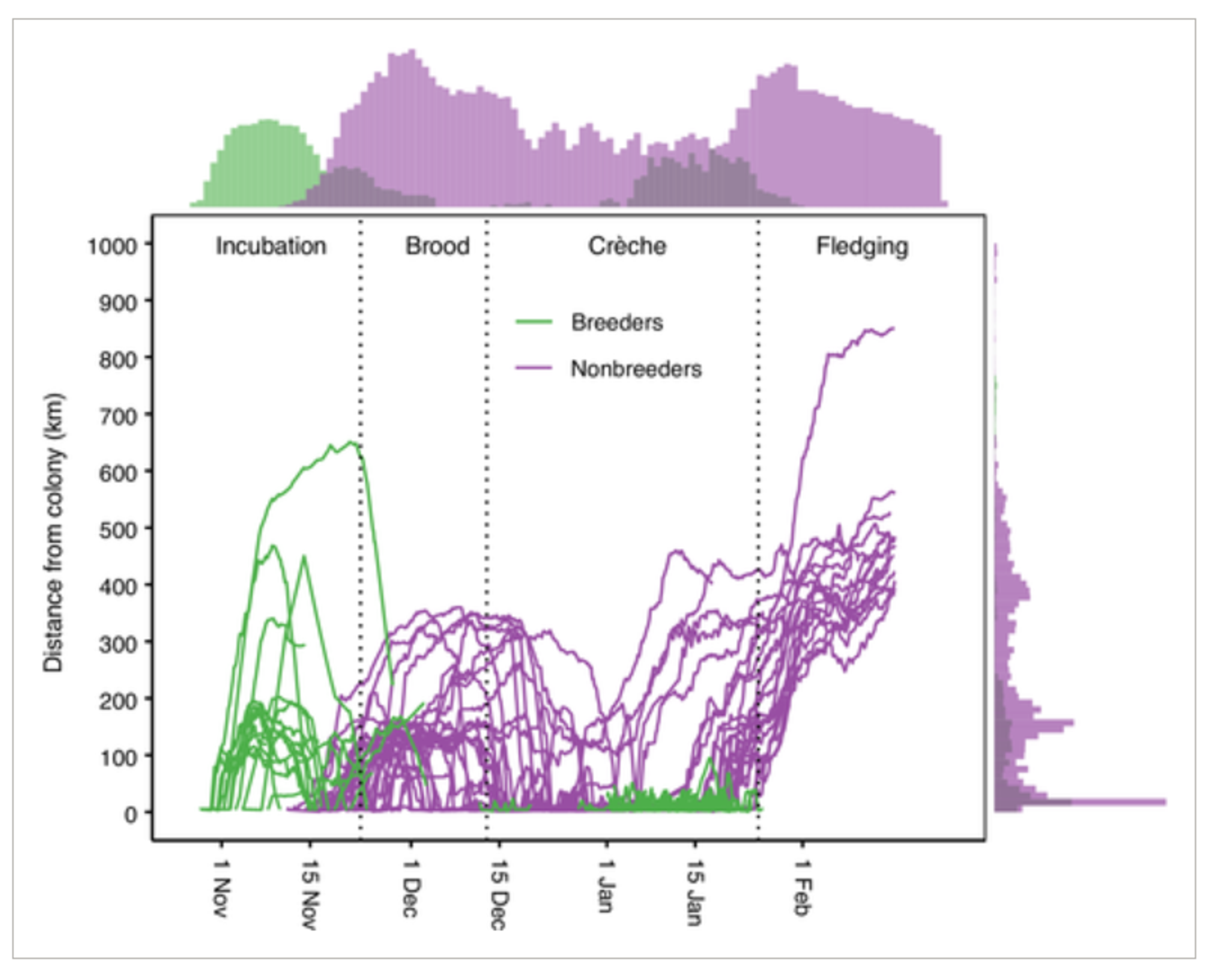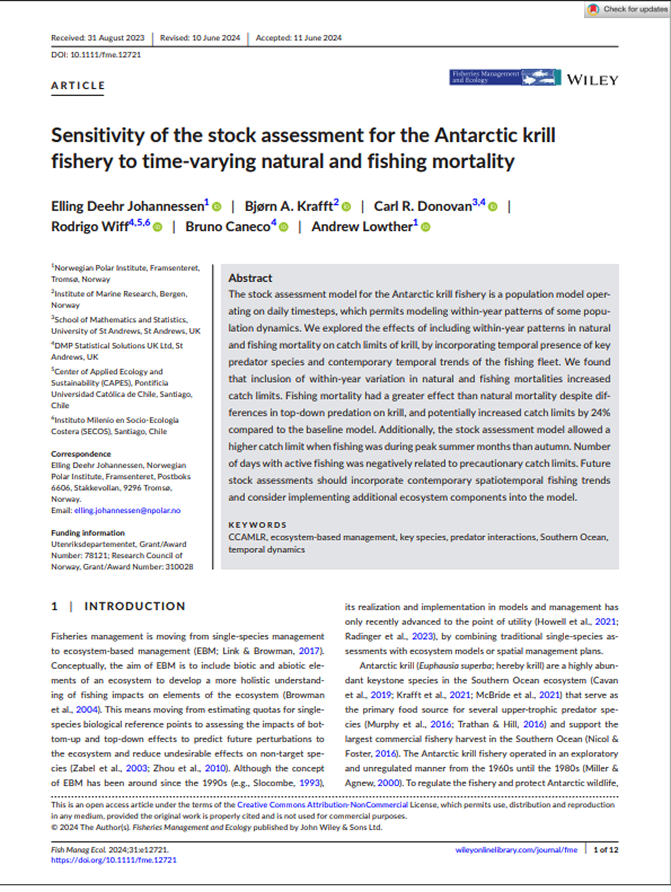
Antarctic ecosystem
The foraging behavior of nonbreeding Adélie penguins in the western Antarctic Peninsula during the breeding season
Summary
This study followed Adélie penguins from King George Island during the 2016/2017 season to understand how nonbreeding penguins behave differently from those raising chicks. The researchers found that nonbreeding penguins have distinct preferences when foraging at sea. They sought out colder waters with more sea ice, especially in areas where Weddell Sea water flows along the Antarctic Peninsula coast. During the early breeding season when penguins were incubating eggs, both breeding and nonbreeding birds foraged in similar areas. However, as the season progressed to the crèche stage - when chicks are old enough to huddle together - clear differences emerged. Breeding penguins stayed close to their colonies to feed their chicks, while nonbreeding penguins made long journeys into the Weddell Sea as part of their premolt preparation. Despite this spatial segregation, both groups still used the central Bransfield Strait as an important shared foraging area, showing some overlap in their habitat use. The research reveals that breeding and nonbreeding penguins operate on different spatial and temporal scales, meaning they may respond differently to environmental changes. This has important implications for conservation planning - effective ecosystem-based management must consider the needs of penguins at all life history stages, not just breeding birds, to protect the full range of habitats these populations depend on.

1
This graph shows how far breeding (green) and nonbreeding (purple) Adélie penguins traveled from their King George Island colony over time. The vertical lines mark key breeding dates: hatching, crèche formation, and fledging. The histograms show data distribution - top shows daily location counts, side shows distance ranges in 10-km intervals. Both groups start close to the colony, but nonbreeding penguins travel much farther as the season progresses, especially after the crèche stage when breeders must stay near their chicks.Key Findings
1
Nonbreeding Adélie penguins increased their prey search behavior in areas with lower sea surface temperatures, shallower depths, and higher sea ice concentration 2
Both breeders and nonbreeders transit through the deep Central Basin of the Bransfield Strait with high directional movement 3
Nonbreeders showed a bimodal movement pattern, with extended on-land residency periods between foraging trips 4
Spatial overlap between breeders and nonbreeders was highest during incubation, lowest during crèche stage 5
Nonbreeders departed on synchronized premolt foraging trips into the Weddell Sea during the crèche stage 6
The southern Bransfield Strait represents important foraging habitat for multiple krill-dependent predators 

